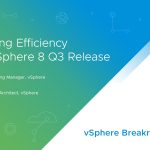Tom Stephens
Senior Technical
Marketing Architect
@vCloud_Storm
Last week I had the pleasure to be in the company of Steve Hester. Steve is an architect who works for Canadian Pacific. Besides being an overall great guy, Steve is responsible for some vCloud Director environments that are used to provide on-demand services for developers.
While we were chatting, Steve made a comment how he wished he had a simple way to get reports on his vCloud Director environment. Nothing horribly fancy or anything that required any additional overhead that he would have to manage… He just wanted something quick and easy that could send him a daily status of the organizations and vApps in his environment.
When he said this, I was immediately reminded of a previous conversation I had with Alan Renouf, whom many believe is PowerCLI-Man. At the time, Alan was working on his latest version of the vCheck script. This is a great script that allows administrators to get information about their VMware environment. It does this by leveraging PowerCLI in an extensible framework. Simply by adding new plugins, administrators can easily customize the output of the reports that are generated. Alan was looking to expand his vCheck script to include the ability to generate reports for vCloud Director, so we were talking about what would be good to include in such a report.
After my conversation with Steve, I contacted Alan again. Within 12 hours, Alan had created a new set of plugins for his vCheck script that allows for the reporting on vCloud Director objects.
Alan’s new vCheck plugin acquires a wealth of information that it then places in a neatly formatted HTML format. Information it gathers includes:
- General Information – Information about the number of active/in-active VMs, vApps created, and virtual machines.
- Organizations – List of all the Organizations, their policy settings, users and roles used, and details about the vApps used.
- vApps – What vApps exist, how many VMs are configured, and what the quota is for the users.
- Catalogs – Lists of all the catalogs created
- Network Settings – Dumps the firewall settings as well as information about what VMs are connected to what networks
The fact that Alan was able to create this so fast is a testament to how easy it is to use PowerCLI with vCloud Director. If you haven’t already checked out the latest version with the vCloud Director plugins, I’d highly recommend it.
Many thanks are due to Steve and Alan!
Steve – Please keep those suggestions and ideas coming!
Alan – Keep doing what you do!
For more information about how you can leverage the PowerCLI vCD cmdlets in your vCloud Director environment, check out these other great articles:
















